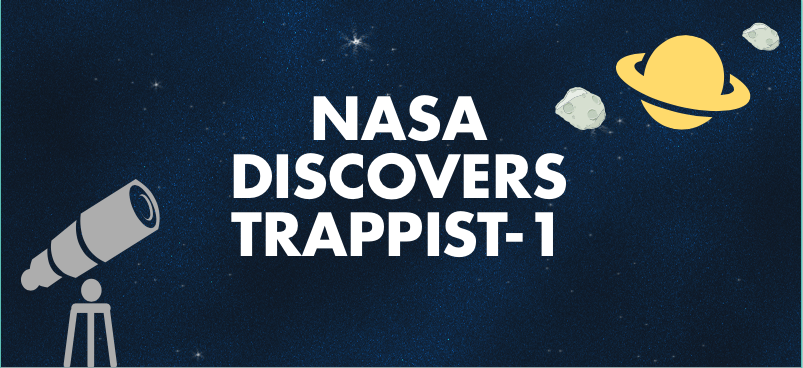Credit: Valerie White/Achona Online. NASA’s Spitzer Space Telescope is an infrared telescope that continuously observed TRAPPIST-1 for 500 hours in 2016.
NASA Discovers Seven New Exoplanets
March 7, 2017
On February 22, NASA announced the discovery of seven Earth-size exoplanets (planets that orbit a star outside of the Milky Way galaxy) that are habitable. They used the Spitzer Space Telescope to find these new bodies and named them TRAPPIST-1, which stands for “The Transiting Planets and Planetesimals Small Telescope”.
These planets contain liquid water with rocky surfaces and have the potential to support life under the correct atmospheric conditions. The seventh planet, in contrast, is predicted to have icy conditions. The exoplanets are located in the Aquarius constellation about 40 light-years away from Earth, which is equivalent to 235 trillion miles.
#7NamesFor7NewPlanets?
TRAPPIST-1b
TRAPPIST-1c
TRAPPIST-1d
TRAPPIST-1e
TRAPPIST-1f
TRAPPIST-1g
TRAPPIST-1h? https://t.co/QS80AnZ2Jg pic.twitter.com/gis6Ba7UBu
— NASA (@NASA) February 24, 2017
NASA asked Twitter to name those new planets and the inevitable happened https://t.co/4uxTP7K1Tn pic.twitter.com/R2Opoi0TZT
— HuffPost (@HuffPost) March 2, 2017
Senior Sydney Sommer says, “Honestly, I don’t see anyone living on the planets any time soon, but it’s a great advancement in the science community to study. It’ll be really exciting to watch them send technology there to discover more information.”
The star that the exoplanets surround is an ultra-cool dwarf, a star of low mass that burns at cooler temperatures compared to the Sun. Studies determined that the star is much closer to the exoplanets compared to the distance between the planet Mercury and the Sun in the Milky Way galaxy. The exoplanets are also closer in distance to each other, meaning that they are visible in great detail if looked from one of the other exoplanets.
Also, they are guessed to be strongly connected to the star in a way that decimates the ability for rotation; one side of the planet would be day, the other night with unpredictable weather conditions and extreme temperature changes.
Senior Kate Reitz says, “I find it really cool that the planets have a structured night and day. Also, it’s interesting to be able to see the other planets, because on Earth we can only see our planets sometimes and have to use a telescope to see the vivid details.”
https://twitter.com/WHATINTARNATlON/status/838917246474940417
NASA plans to use the Spitzer, Hubble, Kepler telescopes, along with the anticipated James Webb Space Telescope, to further study the atmospheric components, temperatures, and surface pressures of the exoplanets in order to confirm their habitability.

